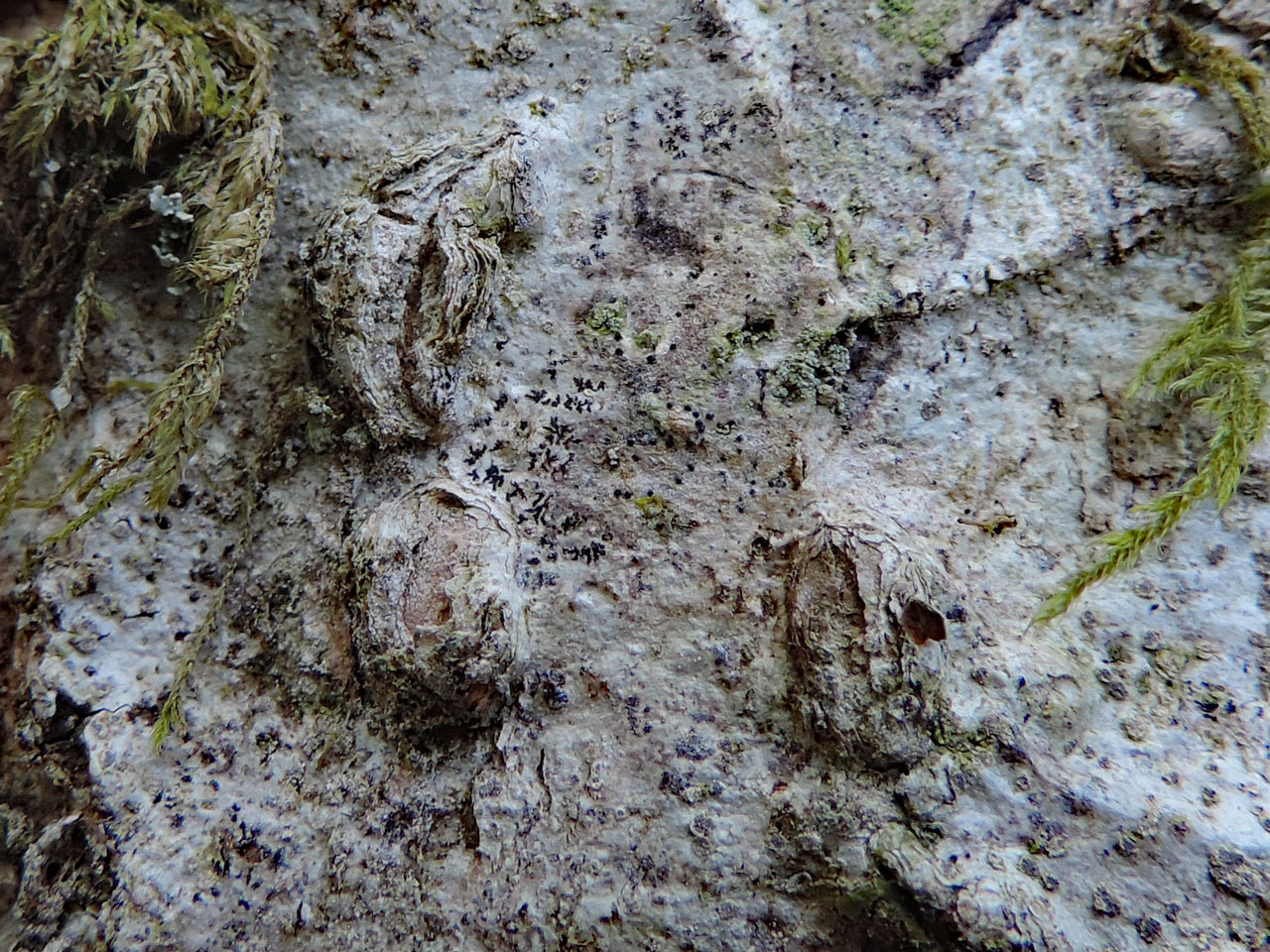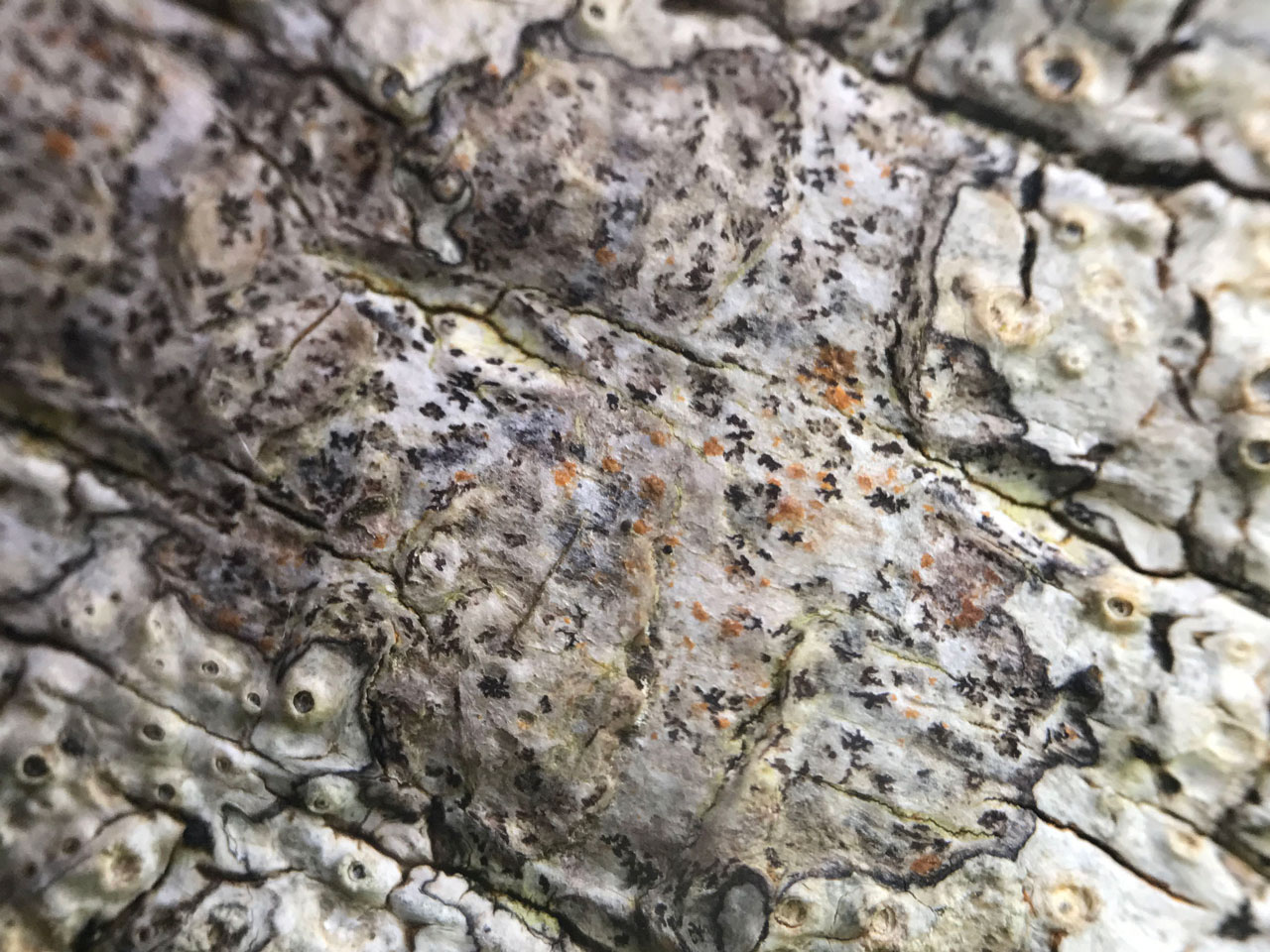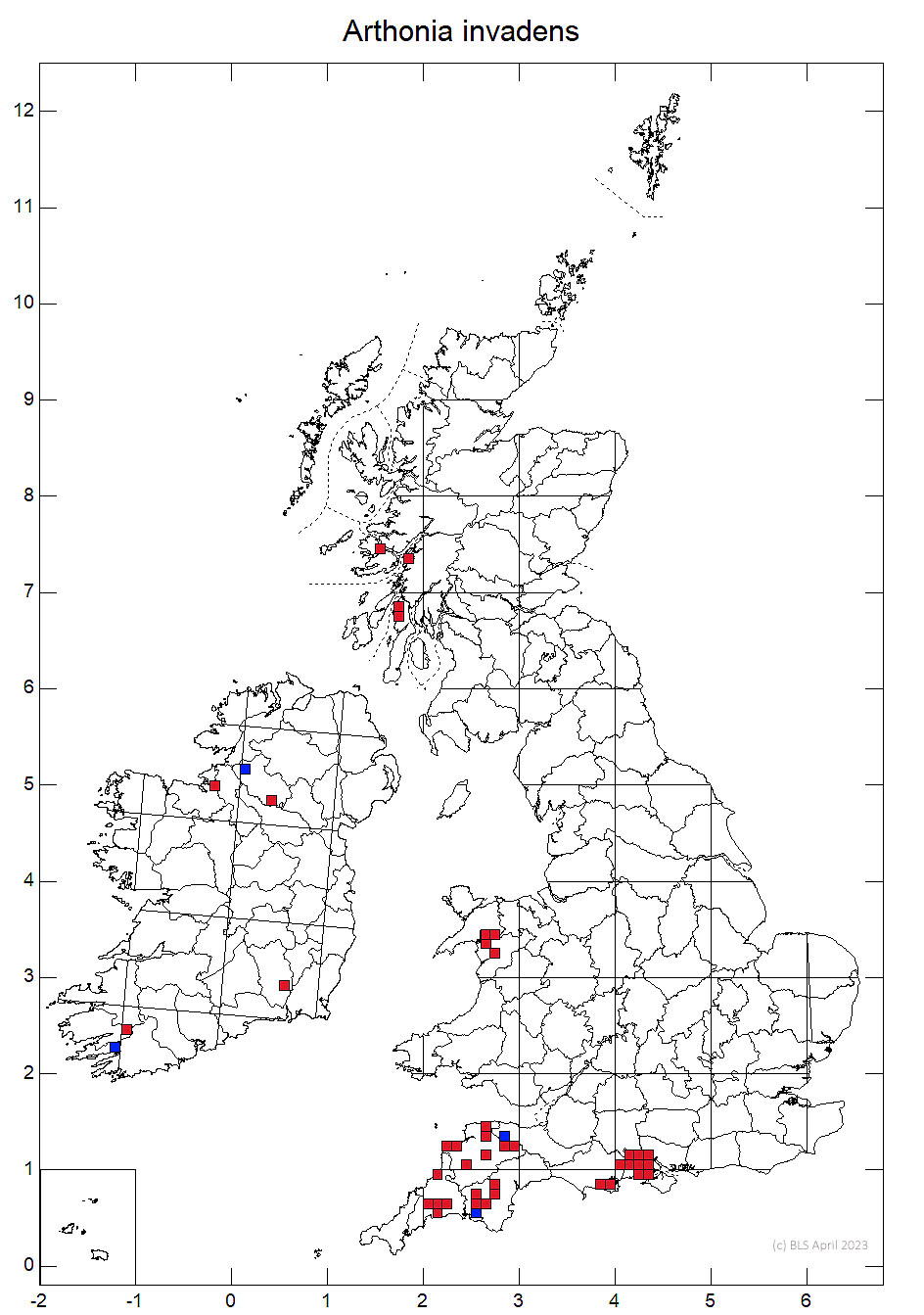Arthonia invadens
A neat little fungal parasite confined to the Notable old woodland lichen Schizotrema quercicola, and dependant on the maintenance large populations of the host so rather rare. The fungus has dark stellate apothecia that are usually found by target searching of the host lichen.
Thallus absent, lichenicolous; weakly parasitic in the thallus of the host, Schizotrema quercicola, suppressing or sometimes eliminating production of soralia. Apothecia evenly and mostly densely scattered, developing below the surface of the bark but soon erumpent, dark brown, not pruinose, linear to more usually stellate or stellate-dendritic, 0.2–0.8 (–1) mm diam., linear apothecia or stellate-rays very narrow, 30–80 (–100) μm broad; in section 54–60 μm tall, I+ blue; epithecium 7–12 μm tall, red-brown, K+ olive; hymenium 30–40 μm tall, colourless or pale red-brown in places; hypothecium indistinct, less than 10 μm tall, colourless; paraphysoids rather scanty, branched, 1(–1.5) μm diam.; apices often brown-walled and to 2 μm diam., without dark caps. Ascospores 11–15 (–17) × (4–) 4.5–5.5 (–6) μm, 2- or 3-septate, the apical cells enlarged, cylindric-obovoid, at first colourless and often with a thin perispore, later covered in brown, granular warts. Pycnidia few, immersed, 40–50 μm diam., the wall red-brown, K+ pale green; conidia bacilliform, 3.8–5 × ca 0.8 μm. Lichen products not known.
Recently sequenced and shown to be in the Coniocarpon-Reichlingia clade (Ertz et al. 2019), but its systematic position needs to be fully established. In circumstances where the lichenicolous nature is not recognised, the stellate non-pruinose apothecia distinguish this species from Reichlingia anombrophila. There are nearly always some relic soralia present from the host on the fringes of the invasion, but rarely these are absent altogether.
On thallus of Schizotrema quercicola in ancient woodland, typically in sheltered humid woods with large populations of the host. Most frequent in the New Forest where Sanderson (2001) recorded Arthonia invadens growing on Schizotrema quercicola only in sites with 60 or more trees per hectare occupied by the host, with the parasite occurring on 3–5 trees per hectare.

Rare. S.W. England, New Forest, Ireland, Scotland (Kintyre), Wales (Merionethshire). Endemic.
Dependant on the survival of large populations of the host, itself a Notable and an International Responsibility Species, so normally confined to larger woodland meta-sites with extensive stands of humid but well lit old woodland. Increasing shade due to the removal of extensive grazing is a threat at several sites.
Britain: Near Threatened and International Responsibility Species
England: Section 41 species
Wales: not assessed
Scotland: Priority Taxon for Biodiversity in Scotland
Cannon, P., Ertz, D., Frisch, A., Aptroot, A., Chambers, S., Coppins, B. J., Sanderson, N. A., Simkin, J. & Wolseley, P. (2020) Arthoniales: Arthoniaceae, including the genera Arthonia, Arthothelium, Briancoppinsia,Bryostigma, Coniocarpon, Diarthonis, Inoderma, Naevia, Pachnolepia, Reichlingia, Snippocia, Sporodophoron, Synarthonia and Tylophoron. Revisions of British and Irish Lichens 1: 1 - 48
Ertz, D., Sanderson, N., Coppins, B.J., Klepsland, J.T. & Frisch, A. (2019). Opegrapha multipuncta and Schismatomma quercicola (Arthoniomycetes) belong to the Lecanoromycetes. Lichenologist 51: 395–405.
Sanderson, N. A. (2001) Epiphytic Lichen Monitoring in the New Forest 2000. LIFE Job L33A2U. A report by Botanical Survey & Assessment to Forest Enterprise.
Text by Neil Sanderson based on Cannon et al (2020)



